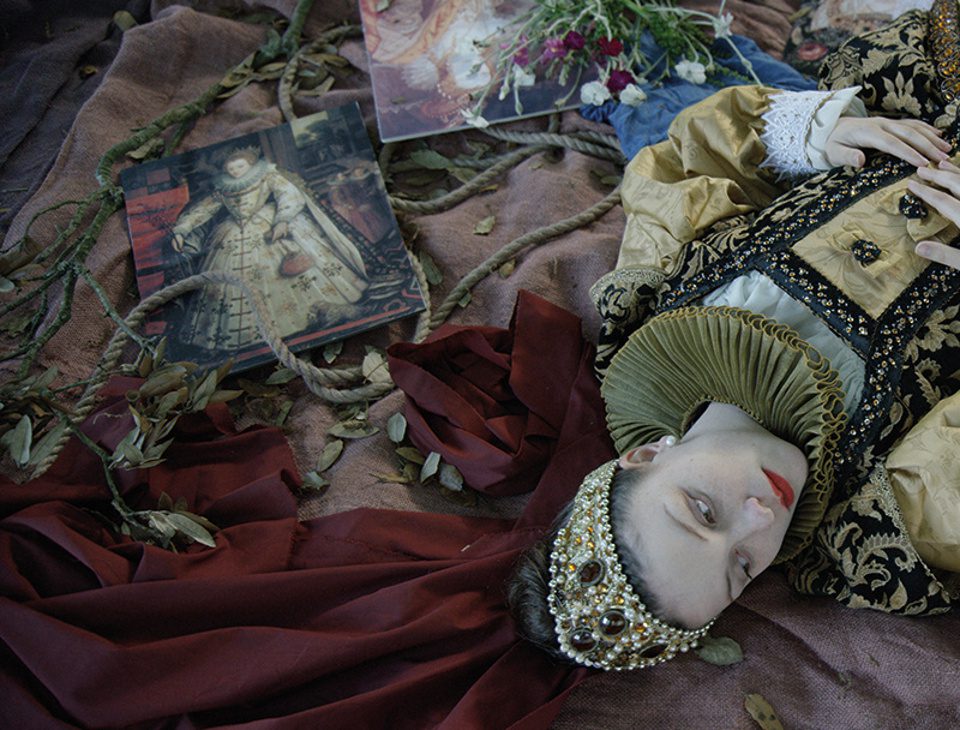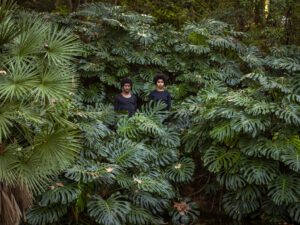John Akomfrah first came to attention in the early 1980s as a founding member of the Black Audio Film Collective alongside the artists David Lawson and Lina Gopaul, with whom he still collaborates today. Their film Handsworth Songs (1986), which marks its 30th anniversary next year, explored the 1985 riots in Birmingham and London through a charged combination of archival material. It won international prizes and showed its lasting relevance when it attracted a huge audience at Tate Modern in the wake of the 2011 riots. Now, London’s Lisson Gallery presents new and recent work by Akomfrah, demonstrating his rich, multi-layered visual style, which is as poetic as it is political and frequently fuses contemporary issues with history, fiction and mythology.
“I’m a born bricoleur. I love the way that things that are otherwise discrete and self-contained start to suggest things once they are forced into a dialogue with something else,” says Akomfrah of his approach. Collaging archival film footage, still photography and newsreel with new material, he investigates personal and collective memories, post-colonialism, temporality and aesthetics in works that explore the experience of the African diaspora in Europe and the US. His The Unfinished Conversation (2012) combines found and newly shot footage to create a kaleidoscopic biopic of the cultural theorist Professor Stuart Hall’s life and work – a piece that is simultaneously projected onto three screens. Other works such as Mnemosyne (2010), Peripeteia (2012) and Vertigo Sea (2015) borrow their premises from literature, mythology and art history, adopting fictional registers to create meditations on memory, diaspora and migration.
For his debut at Lisson, Akomfrah is making two new diptych video installations, shot in Greece and Barbados respectively. The former looks at Greece’s precarious economic position through the cinematic references or “the eyes” of one of the country’s greatest filmmakers, Theo Angelopulous; whilst the latter approaches the current refugee crisis through the handwriting of the Caribbean writer George Lamming. These will be shown together with other new and recent works including Tropikos (2016), a film that transforms the landscape of the Tamar Valley into a 16th century English port of exploration on the African continent.
The Lisson Gallery exhibition will coincide with the first UK showing of Vertigo Sea at the Arnolfini in Bristol (16 January – 10 April), following its debut at the Venice Biennale in May 2015. Together with Trevor Mathison, Akomfrah has also been commissioned to create All That Is Solid (2015) for the British Art Show 8 (at Leeds Art Gallery until 10 January then touring to Edinburgh, Norwich and Southampton). He has also been nominated for the prestigious Artes Mundi, the UK’s largest art prize, the winner of which will be announced in January 2017.
John Akomfrah, 22 January – 5 March 2016, Lisson Gallery, Bell Street, Lisson Grove, London, NW1 5BU.
Find out more: www.lissongallery.com.
Follow us on Twitter @AestheticaMag for the latest news in contemporary art and culture.
Credits
1. John Akomfrah, Tropikos 2016. Single channel video, colour, sound. Smoking Dogs Films; Courtesy Lisson Gallery.





